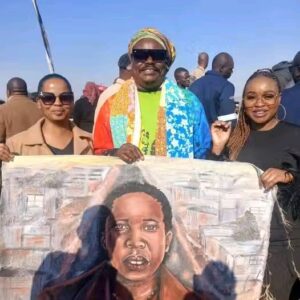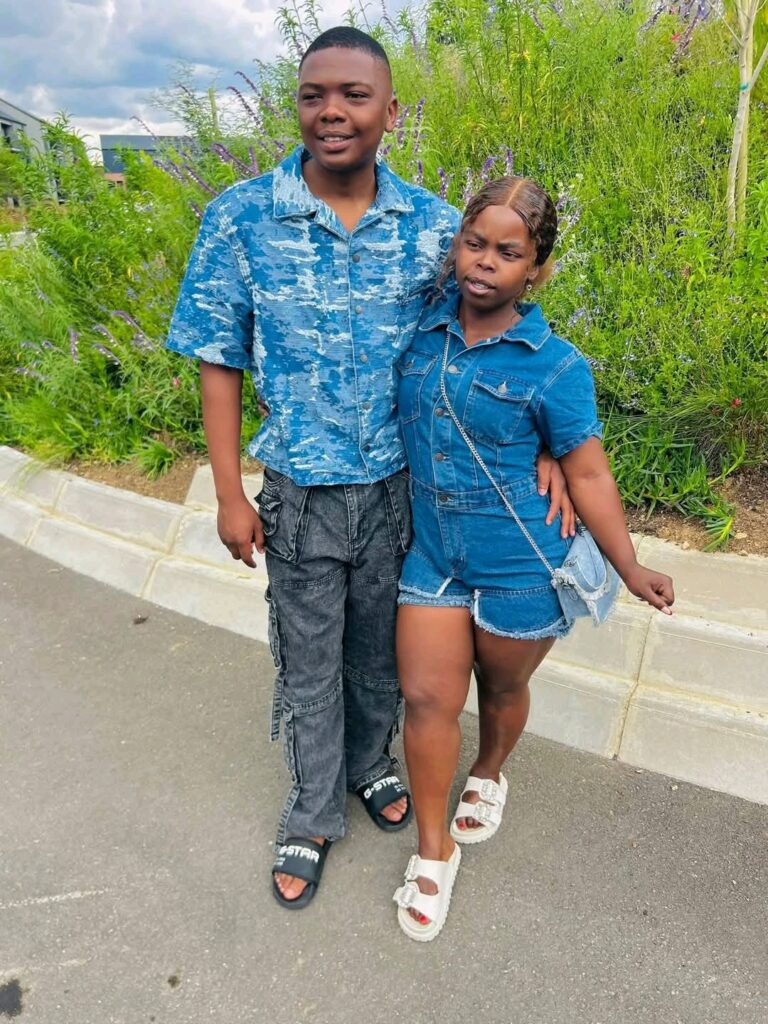
A Tribute Dividing a Nation
Zimbabwean-born artist Lebani “Rasta” Sirenje is no stranger to controversy. Known widely for painting portraits of South African celebrities at their funerals, Rasta has once again found himself at the center of a heated debate. This time, it was his portrait of the late actor Presley Chweneyagae, unveiled during the funeral service in Pretoria on June 7, that stirred emotions across the country.
While Rasta’s intentions were to honor the fallen actor, social media quickly erupted with divided opinions. What was meant to be a respectful tribute turned into an online frenzy as many questioned the quality and likeness of the portrait.
On X (formerly Twitter), reactions ranged from confusion to outright mockery:
“Who the hell is that supposed to be?” asked one bewildered user.
Another sarcastically suggested, “Rasta has to be stopped. Seriously, we need a petition.”
Despite the criticism, others defended Rasta, emphasizing that his work is always rooted in sincere emotion, regardless of the public’s perception of its artistic quality.
Why Rasta Paints: A Personal Mission to Honour Icons
For Rasta, these portraits are more than just paintings—they’re personal expressions of grief and love for the cultural icons who shaped South Africa’s identity. Speaking about his work, Rasta once explained, “I do cry, and then I put my emotions into my art.”
His portfolio features portraits of some of South Africa’s most celebrated figures, including Winnie Mandela, Zahara, Mbongeni Ngema, Connie Chiume, and Arthur Mafokate. His dedication has never been questioned; rain or shine, Rasta shows up at funerals with his canvas and brushes, ready to pay his respects in the way he knows best.
Praise or Problem? The Mixed Legacy of Rasta’s Work
Public opinion on Rasta’s portraits has always been polarizing. Some feel that his work often falls short of resembling the person it’s meant to portray, leading to ridicule online. Memes and jokes frequently circulate whenever one of his artworks is unveiled.
However, many also respect his unwavering commitment to honouring public figures. As commentator Tinashe Eugene Mushanguri pointed out, “Whether you love or question his work, one thing’s for sure—Rasta always shows up to honour our legends.”
The debate touches on a deeper issue within the world of art: What matters more—technical skill or emotional sincerity? Should tributes to national heroes focus on perfect resemblance, or is capturing the spirit of a person through heartfelt expression enough?
The Legacy Continues
Despite facing regular backlash, Rasta remains undeterred. He continues attending funerals, brushes in hand, determined to express his grief and admiration for those who’ve left a mark on South African culture.
Rasta’s latest tribute to Presley Chweneyagae may have drawn both laughter and applause, but it also reignited an important conversation. In a world obsessed with perfection, his work reminds us that sometimes, raw emotion might be just as valuable as technical precision.
The debate, much like Rasta’s portraits, is far from over.




